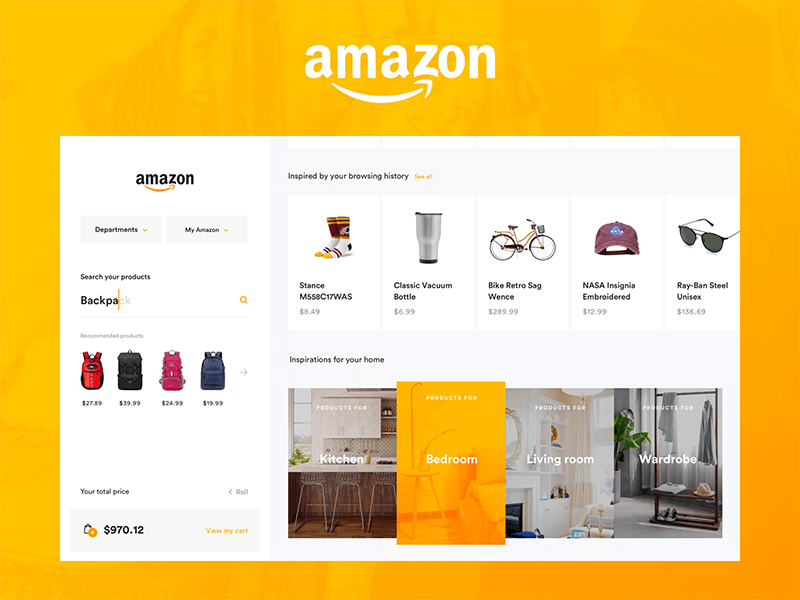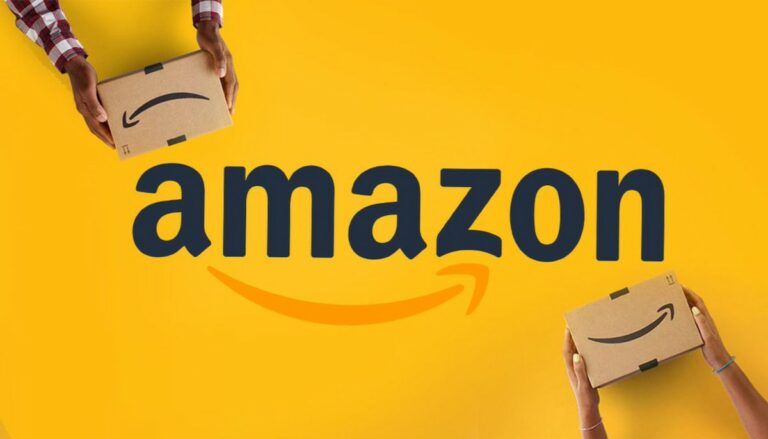Sell on Amazon: For both Amazon FBA seller and customers, Amazon is a popular marketplace. It created its FBA programme to accommodate the growing demand from vendors. With this solution, merchants can reach their business goals by taking advantage of the platform’s large customer base and wide network of distributors.
It is the most widely used platform for retailers. FBA is an abbreviation for “Fulfillment by Amazon,” which means that Amazon will keep your products in stock, fill your orders, and provide customer service. If you want to use Amazon FBA, you’ll need to create an Amazon FBA seller account and then add FBA to it.
It’s vital that you set up your business in compliance with the website’s standards. Create or upload your product listings and inventory to the Amazon marketplace. Prepare the products for delivery and send them to Amazon’s fulfilment centre. When a customer places an order, sell on Amazon FBA completes the transaction and sends the customer delivery and tracking information.
Customer service is available to both suppliers and purchasers 24 hours a day, seven days a week. As a vendor, you will be free of the operations related to inventory, packing, and delivering orders. This method makes getting started extremely simple for you. Amazon’s solid FBA approach also encourages and facilitates international business.
Furthermore, if you’re an Amazon FBA seller, you’ll get free shipping on orders over $25 for books and $49 for other items (all other items). Additionally, you are eligible for Amazon Prime, which offers customers unlimited free two-day delivery or free one-day shipping. The Amazon FBA fee is quite low when compared to other order fulfilment centres. Additionally, the Amazon FBA programme allows you to sell via a variety of channels. You may sell on eBay, your ecommerce site, and other marketplaces in addition to Amazon.
How much money do Amazon FBA sellers need to start selling on Amazon?
This depends on a number of factors, but you may start an Amazon FBA business with a small expenditure (less than $500). Start with an individual account and work your way up to a pro account as your business grows. The key is to identify profitable things and then reinvest your profits.

What are the steps to starting an Amazon FBA business? This article delves into this topic in depth and walks you through all of the steps required to become a successful Amazon FBA seller. If you are just getting started with Amazon FBA seller, you have come to the right place.
1. Create a business plan
To start an Amazon FBA business, you’ll need a plan in place to ensure that everything goes well. Your company’s goal, market analysis, goods and services, marketing and sales strategy, and financial predictions should all be included in your business plan. There are various factors to keep in mind. You’ll need to do some market research, keep an eye on trends, get to know your competitors, and figure out what you want to sell and how much money you want to spend on product sourcing, marketing, and promotion. Make a rough plan for your company’s schedule and critical business responsibilities.
2. Find your niche
You must first identify a profitable specialty to Amazon FBA seller. This is crucial to your success. You must undertake market research and select relevant, stylish, and competitive things that relate to your passions and hobbies in order to operate a successful business. Investigate the emotional effect, practical use, visibility, and awareness of the product trend. Try to identify the selling point or create a fresh, stylish selling point to go viral in the market. We strongly encourage you to stay away from seasonal and perishable items.
3. Begin conducting market research
You must validate your niche in the industry through market research once you’ve discovered it. Keep track of the sales of your rivals over time. Following your competitors will give you a better understanding of the market, niche, or industry. Another alternative is to run a survey or contact a large number of suppliers or customers to learn about their reactions to the items. You may proceed with your plan once you’ve established that the market’s sales data is consistent. In a stable market, you may continue with your plan.
4. Find Product Providers
You’ll need to find a product supplier after you’ve identified your specialisation. There are several ways to find supplier information. Alibaba and other B2B platforms, such as AliExpress, have suppliers. You’ll almost certainly come across a few sellers. Obtain their contact information as well as any other relevant background information. You might also perform a Google search or network with vendors at trade shows. Trade shows are a great way to meet vendors and learn more about their products in a short amount of time.
You may also look for vendors based on industry distribution by going to suppliers. You must contact these companies to see which one is best for you. Send emails, make phone calls, and visit vendors. Avoid con artists and seek out the finest. Learn about the sample goods, price, and minimum order quantity (MOQ), as well as the order limit, product quality, delivery costs, and capacity.
Try to figure out the payment options and terms for your quote. Narrow your choices based on your requirements to find the best one for you. Remember to buy samples to assess the quality of the goods. Check the items yourself or use professional quality inspectors before choosing a service.
5. Purchase Items
You’ll need to place an order after you’ve chosen a supplier. The initial order should, in most situations, be small. You may place a small order to test the market and get vital customer feedback. This method of testing is a great way to learn about the market for your products. To avoid misunderstandings and obtain product production updates, keep in touch with your supplier on a regular basis. Keep the main specifications in black and white and make any necessary changes as soon as feasible. When you place an order, you should examine the merchandise for quality. Examine the raw materials, production line processes, and finished items before shipping.
6. Create an Amazon account
You must first create an Amazon FBA seller account if you do not already have one. Individual seller accounts and pro seller accounts are the two types of accounts accessible. The former is free for the first month, but each item you sell on Amazon will cost you roughly $1. The Pro version has more features and costs $39.99 a month. You may choose the account type based on the budget of your firm.
7. Make a product list
You must first create product listings before you can upload your items to the site. The process of creating your listing involves multiple phases. You must include clear and high-resolution images. Make sure your purchases are “Prime eligible” and take advantage of Prime members’ free delivery options. You can manually list your items if you don’t have many. You can upload a spreadsheet with all of your items if you have a lot of them. Make an effort to include enough information about your products and to make your product listing attractive.
8. Keep a record of your inventory
Amazon FBA sellers must keep a careful eye on their goods. Inventory levels are quite important. Maintain and replenish your supplies with care. It’s crucial that you have adequate inventory to sell and that your product inventory level is appropriate for your market and sales. Amazon will automatically lower your inventory level when orders are placed. Make sure your inventory level is updated on a regular basis to reflect the item’s availability on your product listing page. To merge your sales and inventory data, you may need to employ a complicated system. If you see that an item is likely to run out of stock, change your marketing plan and place orders with suppliers to replenish your stock.
9. Respond to customer feedback
Customers, as we all know, are prone to reading the remarks left by prior buyers. Customer reviews on Amazon are crucial to your business’s success. It’s the level of trust you’ve built with your target audience. These endorsements act as social proof for your business and its products. As a result, you must follow up on the buyer’s purchase experience in order to get feedback. This may be accomplished in a number of ways. You might send emails to customers to get feedback on your products and services. You may build a social media account and use the platform to get feedback from clients. Try to get more positive feedback to increase your sales and conversions.
10. Improve the Effectiveness of Product Listings
Keep track of your sales progress and learn about your company’s market position. Optimize your product listings to increase traffic and revenues to your website. Optimization should be a continuous process for Amazon FBA sellers. Make use of Amazon’s algorithm to help your business.



